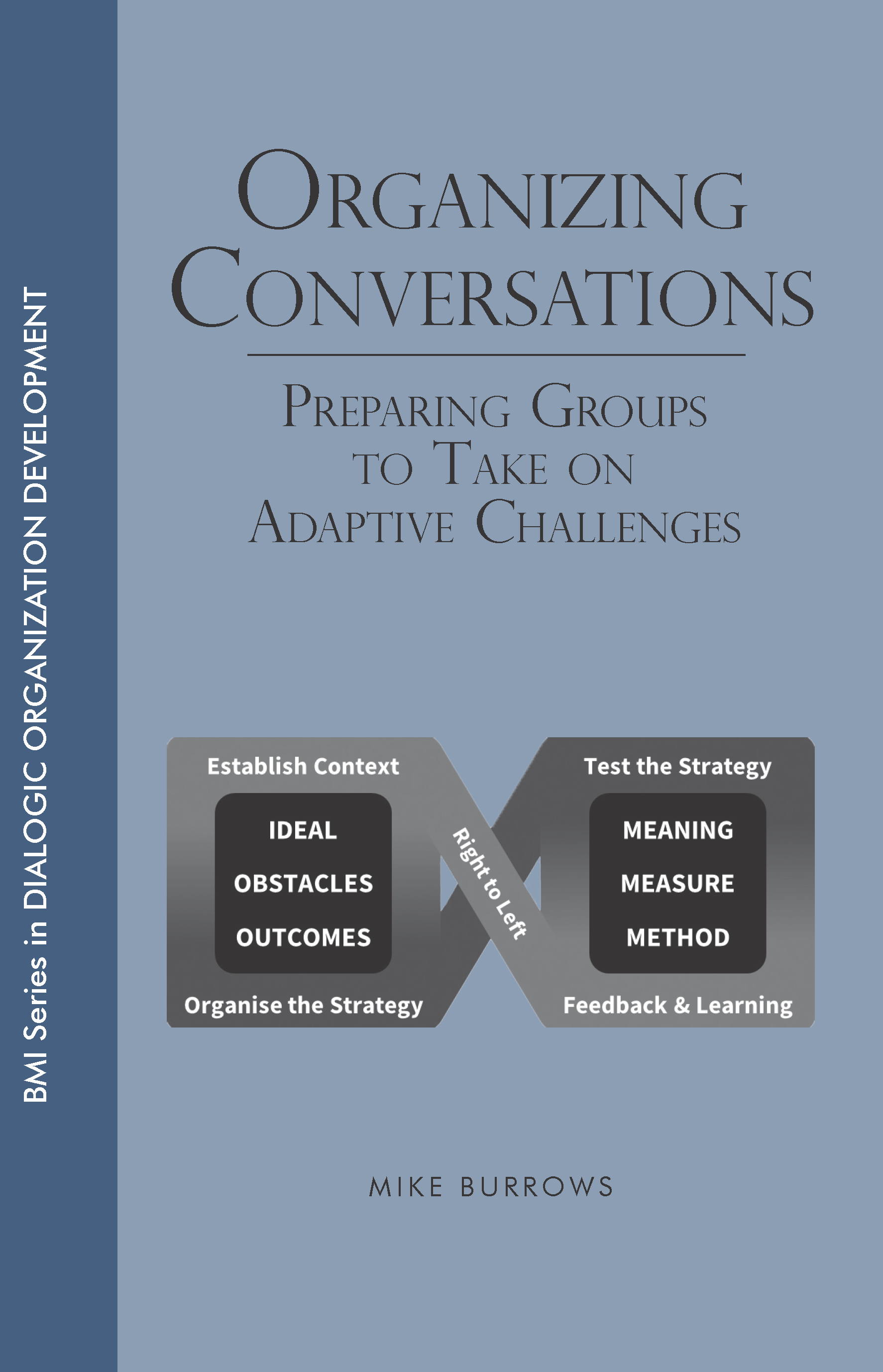Organizing Conversations

The models and processes in this book emerged from Mike Burrows’ frustrating, all too common experience of being asked to help a group become more Agile or Lean, only to discover that many in the room had no idea why they were there. To them, he was there not to help but to impose. Trying to impose new ways of organizing on people with no say in what happens is rarely successful; here, it was both dissonant and ironic because the company was telling people they wanted them to take more ownership and responsibility for their work yet gave them no input into that change.
While leaders are responsible for framing and highlighting the challenges that require a change in how we work together, the people best positioned to identify the outcomes needed are those who work closest to those challenges. Not just their input but their ownership is essential, and the conditions for that are created by dialogue – exploring their constraints and opportunities, motivations and interests, beliefs, assumptions, and narratives. What dialogic change processes have repeatedly shown is that change is much more likely to be successful if we ask those who must change what they think is meaningful and possible.
The book describes the patterns and principles Mike uses to help groups, large or small, first inquire into their experience to create clear ideas about what new outcomes they want to create, and then move onto generative conversations – producing new ideas for achieving those outcomes they are motivated to act on. In a highly nuanced manner, Burrows looks at small differences that make a difference in how you ask questions that are more or less likely to prepare a group to enter into a generative space. The book offers tools and techniques, but more importantly, it describes the underlying principles for hosting a coherent and understandable process that will result in the people who will have to change being in clear alignment and motivated to make those changes happen.
Bring a generative, emergent approach to helping groups solve problems, identify and work through thorny issues, and change work processes, technology, and structure.
Table of Contents
Introduction
Part One: Inquiry
- Context
- Setting the Stage: Shared Ideals, Obstacles, and Outcomes
- Repertoire – Foundations for Setting the Stage
Part Two: Managing the Inquiry Process and Organizing its Outputs
- Configuration, Calibration, and Framing
- Clarifying and Organizing Outcomes Before Searching for Solutions
Part Three: Generative Processes
- Ideation and Experimentation
- Keeping the Conversation Alive




